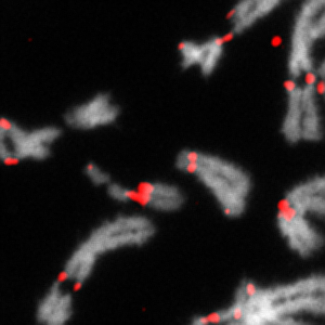
Malaria: New molecule with therapeutic potential
For the first time ever, a molecule able to prevent the invasion of blood cells by parasites of the genus Plasmodium, responsible for malaria, has been identified and described by CNRS scientists,*
in collaboration with American and English colleagues. Their findings, which have just been published in Nature Communications, confirm the key role that myosin A—the ‘molecular motor’ of Plasmodium—plays in their infiltration of human hosts and penetration of their red blood cells, which triggers malarial attacks. Myosin A is found in all forms adopted by Plasmodium during the course of an infection, which makes it a convenient target for an inhibitor.
That inhibitor is now known to exist: dubbed KNX-002, its structure and mode of binding have been determined using crystallography, and its effects tested in vitro on red blood cells. Its discovery paves the way for the development of a new class of antimalarials.

© Julien Robert-Paganin & Anne Houdusse
- *Of the CNRS–Institut Curie Cell Biology and Cancer research unit
Mechanism of small molecule inhibition of Plasmodium falciparum myosin A informs antimalarial drug design. Dihia Moussaoui*, James P. Robblee*, Julien Robert-Paganin*, Daniel Auguin, Fabio Fisher, Patricia M. Fagnant,Jill E. Macfarlane, Julia Schaletzky, Eddie Wehri, Christoph Mueller-Dieckmann, Jake Baum, Kathleen M. Trybus, Anne Houdusse. Nature Communications, 12 June 2023.
DOI : https://doi.org/10.1038/s41467-023-38976-7


